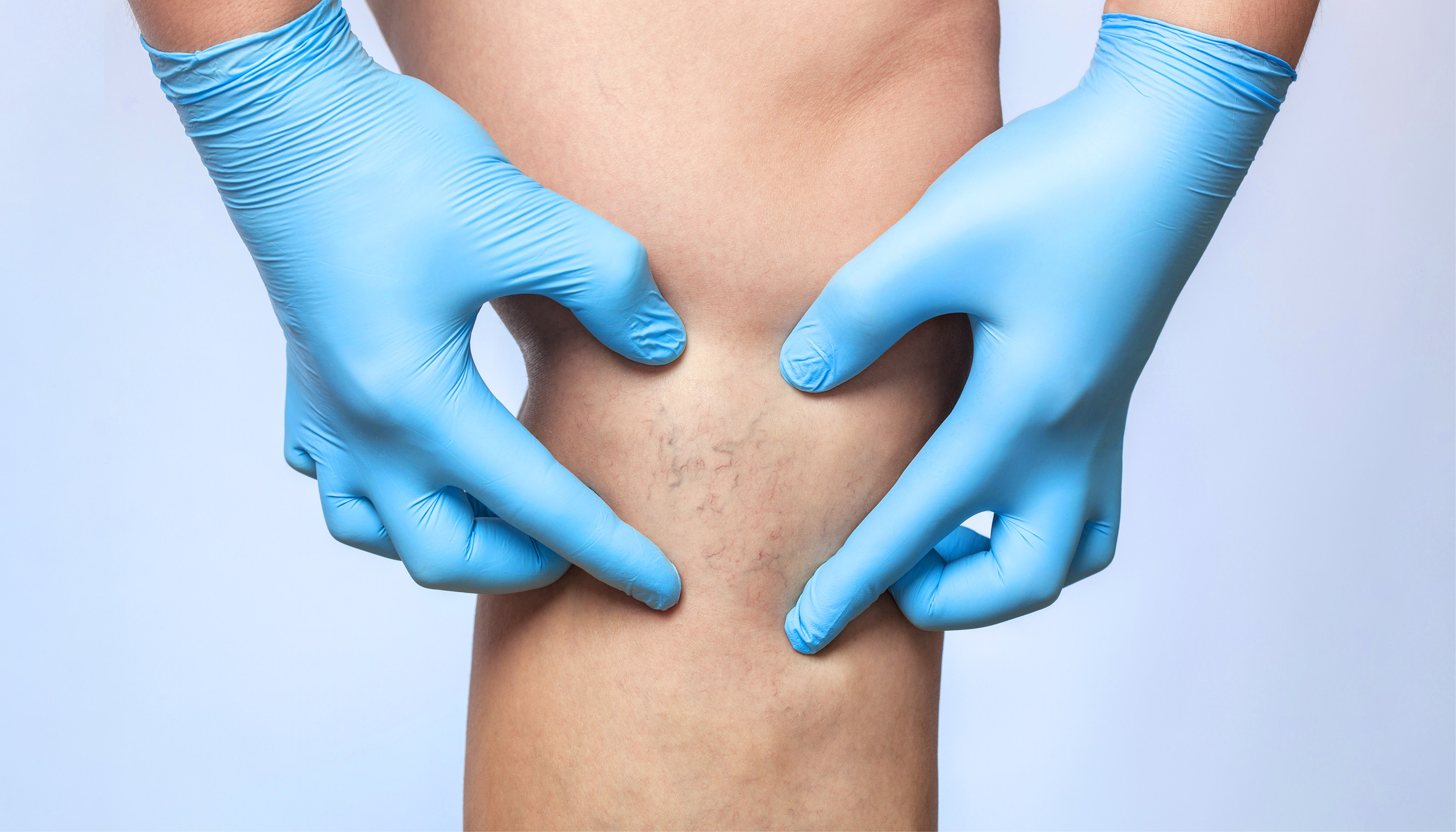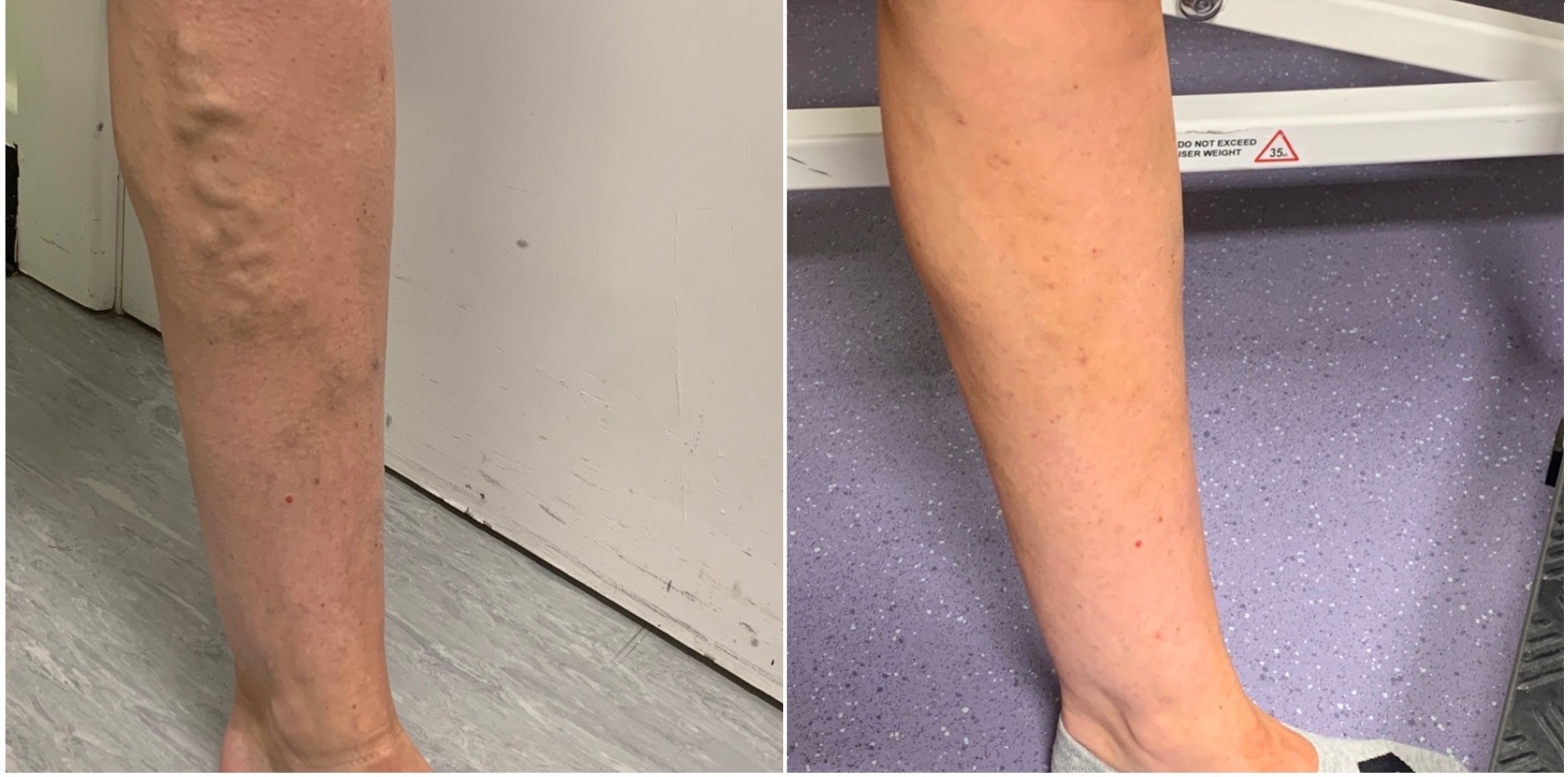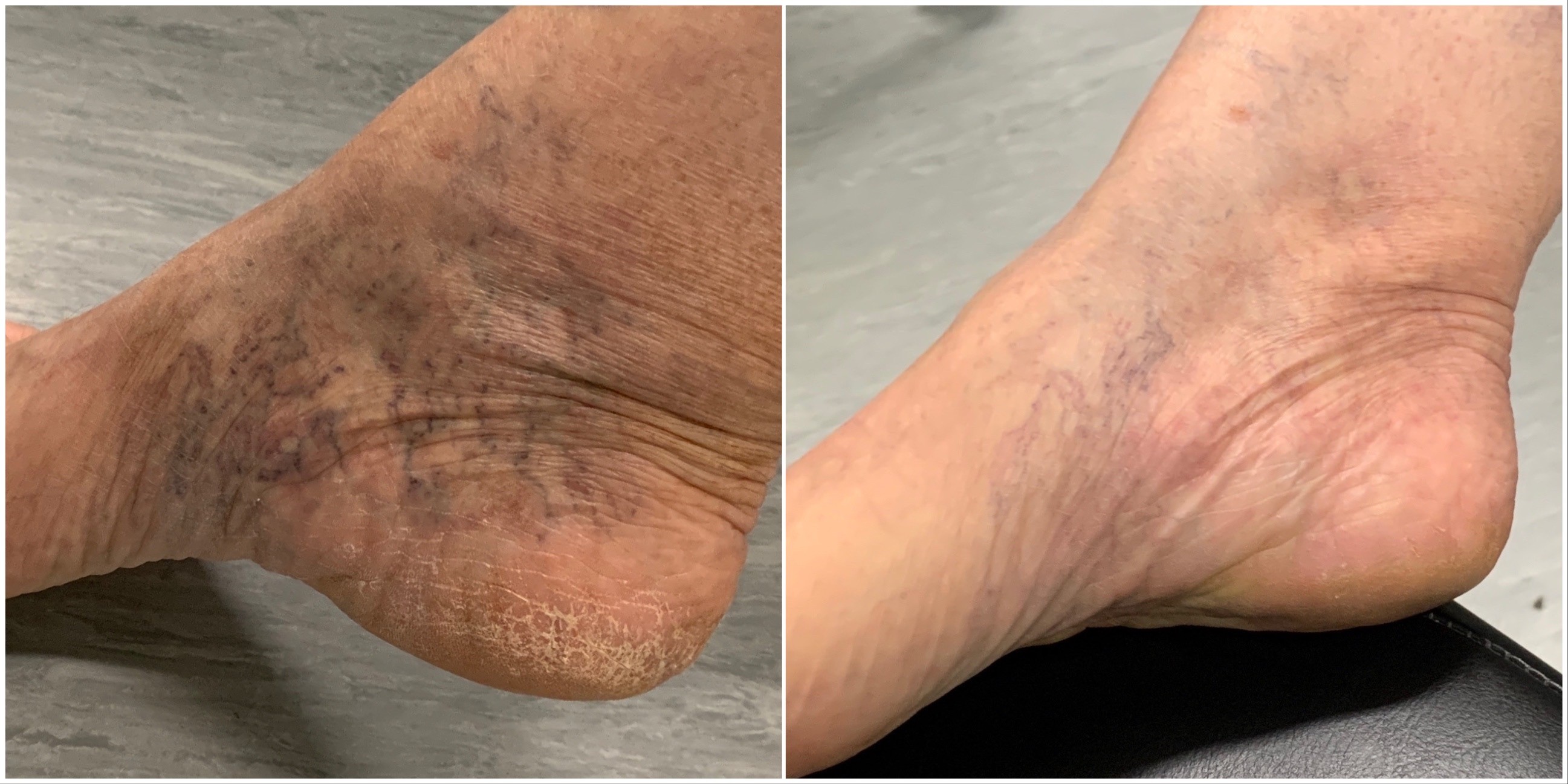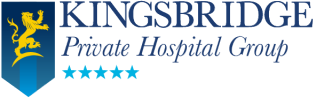Spider Veins, Varicose Veins & Venous Disease With Mr Mzimba, Phlebology Consultant
08th, Sep 2022

Spider veins and varicose veins are a common medical condition that affect every 8 in 10 adults, with women more likely to develop them than men. Factors which can contribute to developing symptoms from varicose veins include age, being overweight or having a job that requires long periods of standing.
Our new Phlebology Consultant Mr Zola Mzimba who holds clinics in Sligo and at our Outpatients Clinic in Letterkenny kindly answered some of our questions to help provide a better understanding of spider and varicose veins, their causes, differences and how we can try and prevent them.
Mr Mzimba is also a Venous Specialist who recently became a Member of the Council for the Venous Forum at the Royal Society of Medicine. He tells us what Venous Disease is and what treatments he can offer.
What made you decide to specialise in Phlebology?
This was due to reconfiguration of vascular services in Northern Ireland. I had trained as a Vascular Surgeon which comprised of assessing and treating people with Arterial diseases such as Aneurysms, performing bypass surgery for patients with peripheral vascular disease and Carotid artery surgery for stroke prevention. As if that wasn’t enough to fill my time I also assessed and operated on varicose veins. A decade ago, came about the reconfiguration of vascular services which meant all Arterial Surgery was to be performed on one site in in Northern Ireland and that site was Belfast. This change resulted in better outcomes for patients with arterial disease. Being treated at a single site, with better resources and by doctors who dealt with large volumes of patients with arterial disease resulted in better outcomes for patients.
I decided not to move to Belfast and so almost overnight I found I no longer assessed or operated on people with arterial disease. Although I missed the arterial surgery it gave me the opportunity to dedicate the whole of my time in the National Health Service to the assessment and treatment of patients with venous disease. This change in practice led me to becoming a Phlebologist (Veins Specialist). Whilst moving arterial patients to one centre helped improve their outcomes, dedicating all my time to people with venous disease helped me improve the outcomes of patients with venous disease that I saw. As a result, I was able to learn and develop the modern techniques and skills required for treating venous disease.
Previously all varicose vein surgeries were performed in an operating theatre under a General Anaesthetic and veins were commonly “stripped out.” Patients took weeks or even months to recover and the incisions could be quite large. Modern techniques using lasers and injections are performed in treatment rooms, under local anaesthetic, through tiny incisions and the patient walks in and walks out. As Arnold Palmer the golfer once said “The more I practice the luckier I get”, well the same holds true for venous disease. The more time you spend seeing, assessing and learning a disease the better your outcomes become or to look at it another way, “the luckier your patients get.”
Can you tell us the difference between spider veins and varicose veins and what we can do to prevent them?
Spider veins are small veins in the skin up to a millimetre in diameter. Because they are in the skin and close to the surface. They are easily visible especially in females who tend not to have hairy legs or wear trousers most of the time. Varicose veins are the larger bulging veins that can cause an unsightly appearance on the legs. Unfortunately, spider veins and varicose veins are very common and there is little that can be done to avoid them occurring. No cream or tablet can prevent the appearance of thread veins and varicose veins in the leg.
Why do spider veins and varicose veins occur?
The majority of spider veins and varicose veins have the same causative factor, they occur because of failure of the valve system within veins. Blood is meant to circulate in one direction from the skin towards the heart. Failure of this unidirectional flow towards the heart is caused by faulty valves within the venous system. When the valves fail blood can flow backward (reflux), it is this reflux that leads to elevated pressure in the venous system leading to the formation of varicose veins and thread veins.
As we enter into the winter months, how can the cold weather affect our veins?
From the venous point of view cold weather can actually improve symptoms. Venous problems usually lead to hot restless uncomfortable legs which can be made worse when the temperature rises. In the winter months your symptoms may improve, and this may also be the perfect time to seek assessment and treatment. The cold weather has the advantage that most people have their legs covered. This gives you the perfect opportunity to have your legs treated and heal, ready to emerge revitalised and refreshed for the summer months.
Can you tell us what Venous disease is and what causes it?
If I were to try to explain venous disease in its totality this would turn out to be a book series rather than a short blog. There are a multitude of diseases related to veins with different causation, hence the need for Phlebologists (vein specialist). For varicose veins and thread veins on the legs, the commonest underlying cause is failure of the valve system to maintain one-way flow towards the heart. There are however many other diseases that can affect veins leading to problems with swelling, clots, inflammation, pain and the likes, all of which may have different causes and most importantly different treatments.
What are the best treatment options for Venous Disease, and do you offer these at Kingsbridge Sligo and Letterkenny?
The best treatment options are the one that is right for your case specifically. There is no single treatment that fits all cases. Treatments need to be planned and need to be bespoke to each individual's particular needs. That said, long straight refluxing veins are best treated by thermal ablation (laser or radiofrequency ablation). Vessels that are not straight have the potential to be treated by ultrasound-guided foam injections. Spider or thread veins in the skin can be treated by micro sclerotherapy. Veins in the face are best treated with short wave diathermy. Patients may need any one of these, or a combination of these therapies, performed at a single sitting or staged. Hence discussion with a venous expert to plan a bespoke treatment that best serves their needs is necessary. All these therapies can be performed in Kingsbridge Sligo and some can be performed in Letterkenny. All of these treatments can be performed under local anaesthetic as a daycase. No in-hospital stays are required.

Pictured above: example of a patient of Mr Mzimba treated under LA for Varicose Veins

Pictured above: example of a patient of Mr Mzimba treated with Microsclerotherapy for Thread Veins
Lastly can you share with us your top tips for healthy legs?
Exercise regularly, maintain a healthy body weight, keep underlying systemic diseases well controlled under medical direction, moisturise your skin, and if unsightly or uncomfortable veins do appear to seek expert opinion. You may not be able to avoid varicose veins or thread veins but with appropriate assessment and advice you won’t have to keep them.
To read Mr Mzimba's full profile please click here.
For further information on the treatments and services Mr Mzimba can provide, please visit veinsnorthwest.com
To book an appointment at Kingsbridge Sligo, please email sligoadmin@kingsbridgeprivatehospital.com
Recent Articles

